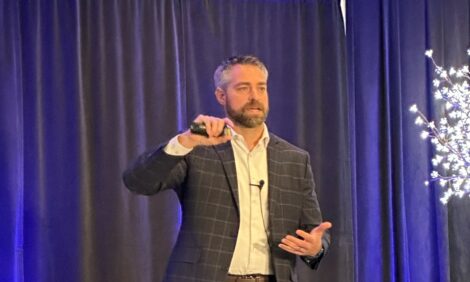



Cattle GHG emissions: are we all counting the same way?
When it comes to greenhouse gas emissions, are all countries counting them the same way?Ruaraidh Petre, executive director of the Global Roundtable for Sustainable Beef (GRSB), describes a new greenhouse gas initiative that GRSB has undertaken.
“We are using a company called Viresco Solutions in Canada to help us in the first phase of a project to look at greenhouse gas accounting methodologies,” said Ruaraidh Petre, executive director of the GRSB. “The issue that we've got is that cattle production systems around the world are being criticized for their greenhouse gas emissions and their climate impact, but in all the different countries the methodologies being used to account for the climate impact and the emissions of the systems are different.”
System boundaries are defined differently from country to country, and differences in production systems lead to inaccurate assumptions, even when the impact of products, such as feed, is the same in multiple countries. There are areas of discrepancy that could lead to inaccuracies in the result.
“What Viresco's been looking at for us is simply an inventory of all of the different methodologies around the world, which are currently under use, the life cycle analysis and the basic assumptions and methodologies they're using,” said Petre. “They've also looked at some areas which aren't being covered at all. One, for example, is the carbon sequestration in soil. At the moment, that is not being accounted for in any LCA system, which means one of the positive impacts of good livestock management is not being captured in life cycle analysis.”
Measuring positive impacts of management is important because when improvements are made, companies can demonstrate that impact to others.
“There are multiple areas which are just currently not agreed upon, such as accounting for certain gases,” said Petre. “Methane is a good example. At the moment we tend to use something called ‘The Carbon Dioxide Equivalents’, which measures methane’s equivalence to carbon dioxide. But carbon dioxide and methane do not behave the same in the atmosphere. Carbon dioxide stays in the atmosphere for hundreds of years, whereas methane degrades over a period of 10 to 12 years.”
Methane is discussed as being a very potent climate gas because in the first few years in the atmosphere, it has a strong warming effect. But after the first 10 years, the warming effect dissolves completely. The beef industry needs to create and use a system that accounts for the long-term warming impact and not methane’s equivalence to carbon, because they are vastly different, he explained.
“The University of Oxford and other colleagues of theirs around the world have come up with a methodology called GWP Star, which is essentially the Global Warming Potential of different gases,” said Petre. “This accounts better for those short term climate gases like methane. It doesn't mean that methane is not an important gas. We recognize it has an impact on climate, and in scenarios such as the present where gas emissions and cattle production is increasing, this methodology will actually make things look potentially worse for climate.”
The importance of using these methodologies demonstrates that if companies are improving efficiency and producing more beef from fewer cattle, they are causing a cooling effect on climate, but if they produce more beef from more cattle and do not improve efficiency, they are causing a warming effect.
“Many countries, and multinational companies have made commitments to reductions, but if they’re not using a consistent methodology, then they cannot make a clear distinction between reductions,” said Petre. “At the moment, we have many different methodologies, many different tools and systems, and it's comparing apples to oranges. We want to converge the methodologies because they recognize the differences in the system, but add them together. We use the same arithmetic for each of those systems so that we’re comparing the real effect that we’re having and can confirm reduction targets are being met.”



